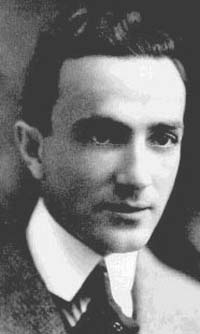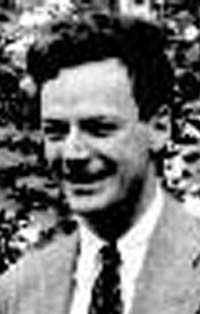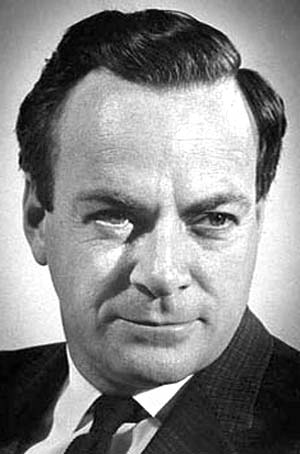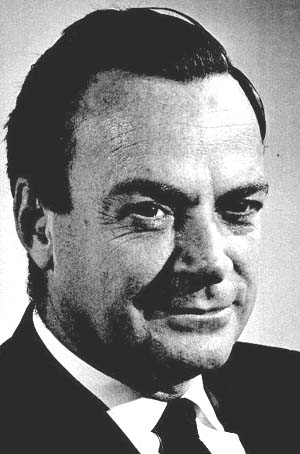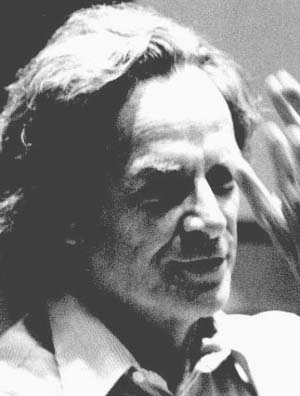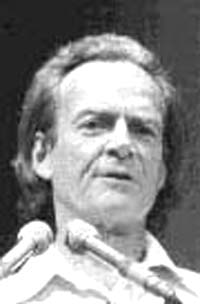Richard Feynman
Copyright Michael D. Robbins 2005
Astro-Rayological
Interpretation & Charts
Quotes
Biography
Images and Physiognomic Interpretation
Richard Feynman—Theoretical Physicist
May 11, 1918, Died, of cancer, Los Angeles, CA, 1988.
(Speculative: Sagittarius Ascendant)
For a successful technology, reality must take precedence over public relations, for Nature cannot be fooled.
I believe that a scientist looking at nonscientific problems is just as dumb as the next guy.
I was born not knowing and have had only a little time to change that here and there.
If I could explain it to the average person, I wouldn't have been worth the Nobel Prize.
It is in the admission of ignorance and the admission of uncertainty that there is a hope for the continuous motion of human beings in some direction that doesn't get confined, permanently blocked, as it has so many times before in various periods in the history of man.
Poets say science takes away from the beauty of the stars - mere globs of gas atoms. I, too, can see the stars on a desert night, and feel them. But do I see less or more?
Reality must take precedence over public relations, for nature cannot be fooled.
Scientific views end in awe and mystery, lost at the edge in uncertainty, but they appear to be so deep and so impressive that the theory that it is all arranged as a stage for God to watch man's struggle for good and evil seems inadequate.
The first principle is that you must not fool yourself and you are the easiest person to fool.
The idea is to try to give all the information to help others to judge the value of your contribution; not just the information that leads to judgment in one particular direction or another
The theoretical broadening which comes from having many humanities subjects on the campus is offset by the general dopiness of the people who study these things...
There is a computer disease that anybody who works with computers knows about. It's a very serious disease and it interferes completely with the work. The trouble with computers is that you 'play' with them!
We are at the very beginning of time for the human race. It is not unreasonable that we grapple with problems. But there are tens of thousands of years in the future. Our responsibility is to do what we can, learn what we can, improve the solutions, and pass them on.
Richard P. Feynman – Biography
Richard P. Feynman was born in New York City on the 11th May 1918. He studied at the Massachusetts Institute of Technology where he obtained his B.Sc. in 1939 and at Princeton University where he obtained his Ph.D. in 1942. He was Research Assistant at Princeton (1940-1941), Professor of Theoretical Physics at Cornell University (1945-1950), Visiting Professor and thereafter appointed Professor of Theoretical Physics at the California Institute of Technology (1950-1959). At present he is Richard Chace Tolman Professor of Theoretical Physics at the California Institute of Technology.
Professor Feynman is a member of the American Physical Society, the American Association for the Advancement of Science; the National Academy of Science; in 1965 he was elected a foreign member of the Royal Society, London (Great Britain).
He holds the following awards: Albert Einstein Award (1954, Princeton); Einstein Award (Albert Einstein Award College of Medicine); Lawrence Award (1962).
Richard Feynman is married to Gweneth Howarth, they have a son, Carl Richard (born 22nd April 1961), and a daughter Michelle Catherine (born 13th August 1968).
From Nobel Lectures. Physics 1963-1970, Elsevier Publishing Company, Amsterdam, 1972
This autobiography/biography was written at the time of the award and later published in the book series Les Prix Nobel/Nobel Lectures. The information is sometimes updated with an addendum submitted by the Laureate. To cite this document, always state the source as shown above.
Richard P. Feynman died in 1988
Richard P. Feynman, biography of a man who was always admired for his wit, intelligence, independence and a never-ending curiosity.
Quantum theory of the electromagnetic field (of electricity and magnetism, and of the ripples in the field that are light and X-rays & radio waves) was a puzzle for the scientists when Richard Feynman was in college. Since great scientists of that period could not find a satisfying theory Feynman decided to simply ignore what they said and decided to proceed with his own research in the field.
Years later he came up with new quantum theory (Quantum electrodynamics) which brought him a Nobel Prize for Physics in 1965. His theory has been proved to be the most accurate scientific theory created.
Richard Feynman was born on May 11, 1918 in Brooklyn to Lucille and Melville Feynman. Since childhood he was known for his fascination towards science and puzzles.
He almost reinvented everything that he studied. While in school, rather than learning trigonometry from the book, he reinvented all the formulas himself: he was quite successful. On his summer job he invented a new method for carrying many dishes at a time and to cut many beans at a time, however, not always in this was he successful. While working on the atom bomb at Los Alamos he figured out how to crack top-secret safes and just for amusement he took every opportunity to open them.
He got his Bachelor of Science degree from MIT in 1939 and received his doctorate at Princeton University in 1942.
In 1942 he got married to his childhood sweetheart, Arlene Greenbaum, who was suffering from fatal tuberculosis of lymphatic system. In 1945 she died in the hospital. Feynman could never really get over his grief of losing her.
Later he married Mary Louise Bell that ended in divorce. In 1960 he married for the third time to Gweneth Howarth. This marriage is believed to be a happy relationship. He got a son out of this wedlock and adopted a daughter.
Feynman was a born teacher. He felt that it was teaching that gave him a sense of achievement and growth. He felt stagnant when he was not teaching. He tried to bring everything to the freshmans level. If he could not explain some subject at that level he would admit that he has not understood it. He was extremely honest and independent in his behavior. He enjoyed being with undergraduate students.
In his attempt to revive the Cal-tech physics syllabus for freshmen he produced three valuable books in a series called Feynmans lectures on Physics. By now they have become classics. In those lectures he recreated almost everything in physics.
In 1986 he was appointed to the committee investigating the explosion of the space shuttle Challenger. That was the real test of his independence. Away from bureaucracy he pursued his investigation in his own way and finally identified the problem. The night before the shuttle took off it was so cold that the ice was built up on the shuttle. He showed publicly how rubber loses all its resilience when dropped in iced water, which was self-explanatory.
The mathematician, Mark Kac, referred him to as a magician. Feynman perhaps was the most famous scientist in his time. His books, his services right from developing an atom bomb to probing into Challenger mystery made him quite popular among people. Yet this showmanship was just an act. In reality he was a very private person who described Nobel Prize as a pain in the neck as it gave him enormous publicity that started interfering his research life.
He was always admired for his wit, intelligence, independence and a never-ending curiosity. He was never satisfied with what he knew and always continued to question science. His curiosity was not restricted to science only. Anything that puzzled him became a challenge to be solved for him.
He was not at all possessive towards his research findings. When he discovered that a young colleague has come with some work, which he had done long before but never published, he allowed him to take the credit for the research. Yet he could be insensitive and cruel to those who would fall below his expectations. He would insult anything that was non-scientific. He would also tease visiting lecturers. At times he was clownish and boasting. For many undergraduates he was a fun but his colleagues had mixed reactions about him. Although no one had a doubt about his extraordinary understanding of physics he was often referred to as half genius and half baffoon.
Until two weeks before his death he continued to lecture in California Institute of technology. His last lecture was on curved space-time. Feynman died in 1988 after a decade long battle with cancer.
Richard Phillips Feynman (May 11, 1918 – February 15, 1988) (surname pronounced "fine-man") was one of the most influential American physicists of the 20th century, expanding greatly the theory of quantum electrodynamics. As well as being an inspiring lecturer and musician, he helped in the development of the atomic bomb and was later a member of the panel which investigated the Space Shuttle Challenger disaster. For his work on quantum electrodynamics, Feynman was one of the recipients of the Nobel Prize in Physics for 1965.
He is also famous for his many adventures, detailed in the books Surely You're Joking, Mr Feynman!, What Do You Care What Other People Think? and Tuva Or Bust!. Richard Feynman was, in many respects, an eccentric person and was not ashamed of it.

